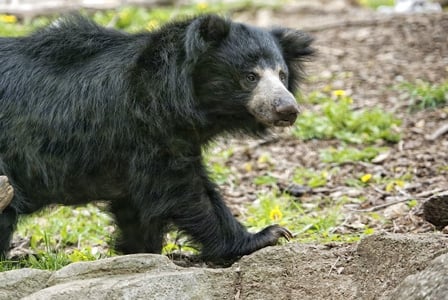
If youve ever had a bad hair day, these members of the bear family are living, walking proof that it can always be worse.
Are they bearlike sloths? Or slothlike bears? For quite some time, even researchers weren’t entirely sure. Let’s explore the facts on this Wildlife Wednesday.
Habitat
These shaggy bears are natives to Southern Asia—more specifically, they can be found in the forests and grasslands of India, Sri Lanka, Nepal, and Bhutan.
Trivia
- In the 1700s, European explorer George Shaw first coined the name “bear sloth” to describe these forest-dwellers.
- However, when these bears were further studied in 1810, the sloth versus bear mistake became clear and researchers settled on the name that we know today.
- While the mistake might seem odd now (after all, these bears can be quite fast!), the name seemed to make sense due to the bears’ many slothlike characteristics, including
- un-bearlike teeth, which help them feed on termites and other insects
- curved, slothlike claws for digging up insect nests
- a long, shaggy coat to protect them from stinging bug bites
- a habit of hanging upside down from trees
- a nonexistent hibernation pattern
- the mother bears’ unique trait of carrying cubs on their backs
Why are they threatened?
In spite of the fact that they live in such a warm place, these bears don’t seem to be doing all that hot—they’re listed as “Vulnerable” in the IUCN Red List of Threatened Species, and their population numbers are still falling.
Habitat loss and degradation is a major concern for this species due to the expansion of agricultural areas and human settlements, the overharvesting of trees by forestry industries, and the construction of roads.
Poaching and trapping also pose a threat; various parts of the bears are used in traditional remedies or to ward off evil spirits, and cubs may be captured for use as “dancing bears” for the amusement of locals.
